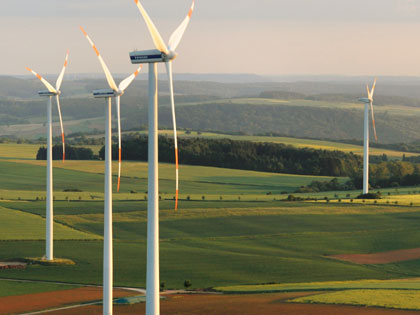
Wind energy is rapidly expanding, and the many benefits of wind power over other types of energy explain why. Let's get a big picture look at wind energy before outlining why wind power is, frankly, better than the alternatives, including other types of alternative energy.
Wind turbines harness the energy of spinning blades to power a turbine, though there is a gear box between them located in the nacelle to make sure quickly spinning blades don't destroy the turbine. The generator creates electricity that is then sent to the power grid. If the blades are spinning too slowly, power may not be generated. The power generation is related to wind speed, but the benefits are literally exponential. Double the wind speed, and the power potential goes up eight-fold.
The most common design is a horizontal axis design. This is the classic upright pole or massive tower topped with two or three blades. The spinning portion is called the nacelle. In the largest wind turbines, there is a hydraulic system to turn the blades into the wind to maximize energy production. Offshore wind turbines are the largest you'll typically see. These machines can generate up to 5 MW, while the average wind turbine on land puts out less than 2 MW. For perspective, the biggest wind turbines can generate enough power to supply 600 homes in a year.



The technology has been harnessed in other ways, too, running water pumps for centuries or running other equipment. However, the major application is providing off the grid power or adding power to the power grid. A fifty kilowatt wind turbine, for example, can power a dairy farm or small village. Utilities create wind power at the level people need by setting up wind turbines in groups called "wind farms". A wind farm with hundreds of turbines could power thousands of homes. And unlike an array of solar panels, the land beneath it can still be used for farming or grazing livestock.
See All Services
We have been transforming the ideas and visions into award-winning projects.